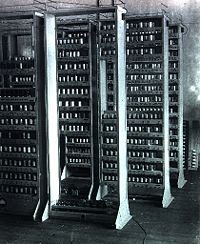Voluntary computer schemes allow scientists to farm out some of the 'number crunching' which has to be done in major research programmes.
Reconstructing the conditions of the early universe, combating a deadly disease and even finding extra-terrestrial life may use 'grid computing'.
Simon Lin, of the Taipei-based research institute Academia Sinica, told the BBC World Service's Digital Planet that grid computing in Asia was helping change the approach to research.
He explained that voluntary computing may help research aimed at developing drugs from dengue fever, which is found in less developed countries.
Big pharmaceutical companies did not necessarily have enough incentive to develop a drug for the condition but grid computing cou;d offer a solution and lead to a drug screening programme, Mr Lin added.
He went on: "The results will be shared by the researchers who will be interested in developing drugs for this particular disease."
On the issue of computer security, Mr Lin said: "Actually, if you download these applications from the genuine volunteer company site then it should be quite safe.
"On the other hand, if the user turned out to be a hacker...they might be able to take the data they are working on. But the chances are remote because usually the data has been split, so even a real hacker can get only a small piece of data. He would not be able to see the big picture."
He explained that the one key benefit of grid computing is the cost factor.

Major change
Mr Lin added: "The cost is definitely much much lower. And secondly we see the strategic importance that we must get the Asian people into scientific collaboration. This is something they are less familiar with.
"I think this is part of the a very long term shift or transition. Eventually science in the 21st Century will have to be conducted in a different way.
"We see these great changes in internet and digital technology has brought to us but the scientific process hasn't really changed that much and this volunteer computing is one of the potential directions that may change the way we conduct scientific research."
Mike Butcher, Europe editor of technology blog TechCrunch, explained that there were incentives for people to join up to such schemes.
He said: "Well there is of course an altruistic imperative, you can actually get to feel good. You are contributing to scientific research and the search for UFOs or possibly even something to cure cancer.
"A lot of these systems now offer a credit system, whereby you might yourself be able to submit experiments or things you want to research to the system and then because you have built up enough credits in the system, you can get something done yourself.
"This is going to appeal a lot of the time to academic researchers but one can see in the future that there will be a time when people can access grid computing just for personal projects." source:BBC News
source:BBC News
April. 30, 09








